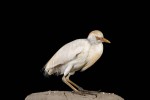White stork – Ciconia ciconia
White stork – Ciconia ciconia
The white stork is a large wading bird species of the Ciconiidae family.
Its plumage is mainly white, with black on the wings. Adults have long red legs and a long straight red beak and measure, on average, 100 to 115 cm from the tip of the beak to the tip of the tail with a wingspan between 155 and 215 cm.
Two subspecies are distinguished, which differ slightly in size and living in Europe to Finland, Central and Southern Africa and Kazakhstan.
White Storks are highly migratory and winters in tropical sub-Saharan Africa to South Africa or the Indian subcontinent. At its migration is between Europe and Africa, it avoids crossing the Mediterranean Sea by making a detour to the east by the Middle East and to the west by the Strait of Gibraltar since the currents of air it needs are not formed above the water.
White Stork has a carnivorous diet and consume a wide range of animal prey: insects, mollusks, various other invertebrates, fish, amphibians, reptiles, small mammals and birds. It finds most of its food on the ground, among low vegetation and in shallow water.
The species is monogamous but the partners do not pair for life. They build a large nest of branches that can be used for several years. Each year the female usually lays four eggs, which hatch asynchronously, 33 or 34 days after laying. Both parents take turns incubating the eggs and feeding the young. The young fledge 58 to 64 days after hatching and continue to be fed by the parents for 7 to 20 more days.
This remarkable bird has given rise to many legends throughout its range, of which the best known is that of babies brought by storks.





